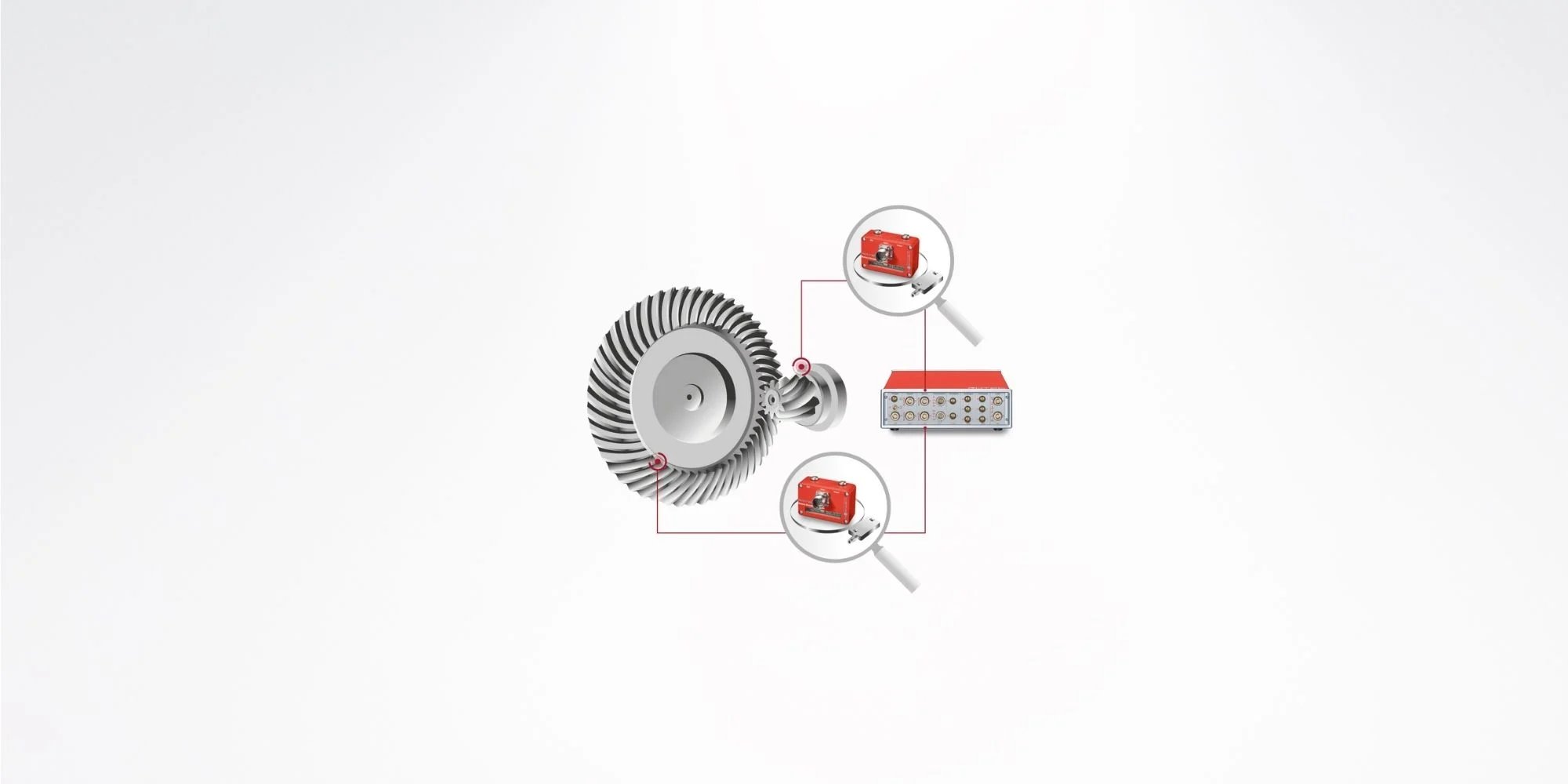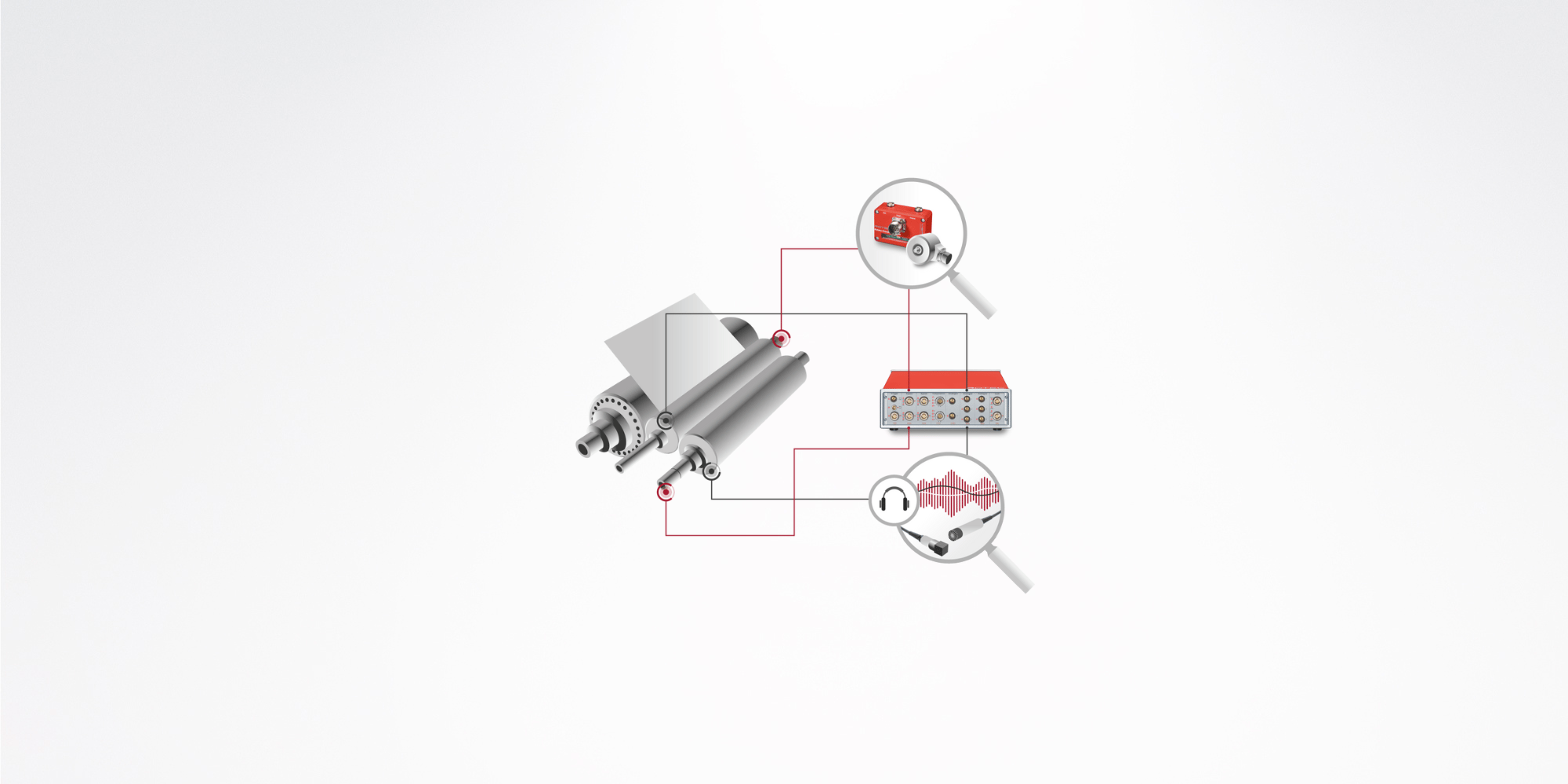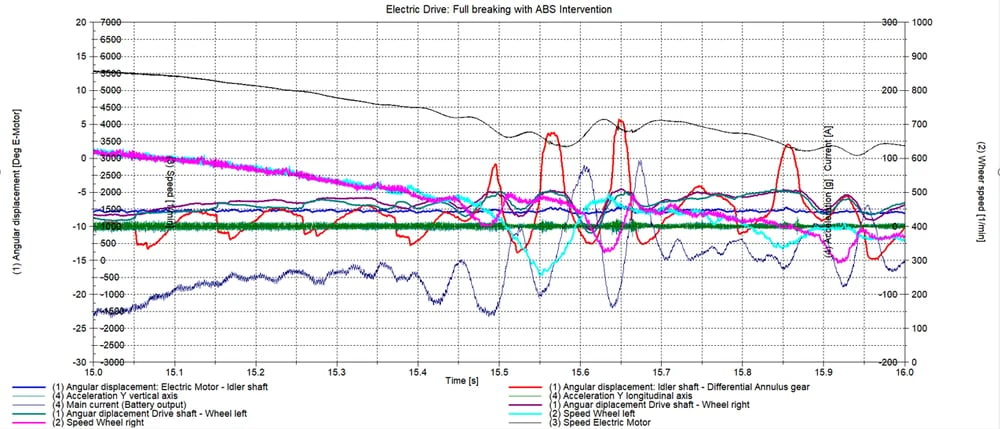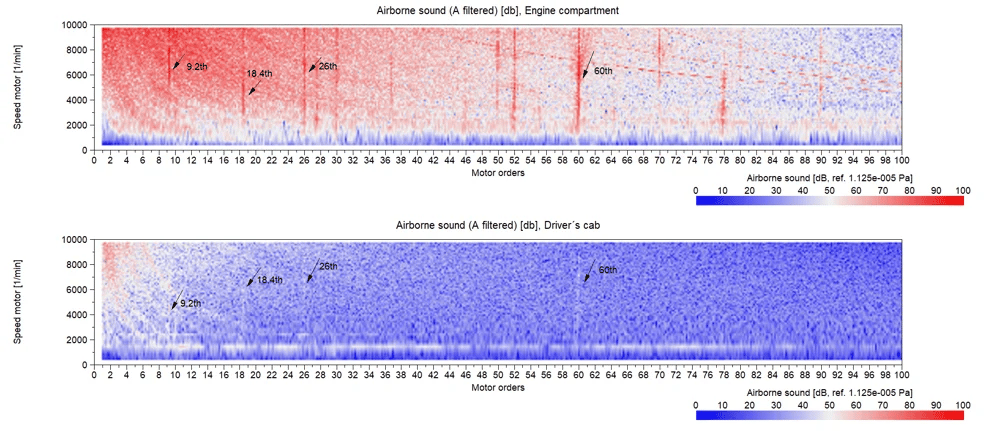Maschinenbau

Problem: Geräuschverhalten des Getriebes
Ziel: Prüfung der Getriebequalität
Die Einflankenwälzprüfung ist eine Prüfmethode zur Messung der Wälzabweichung an einem Kegelrad. Ziel ist es, die Getriebequalität zu überprüfen und fehlerhafte Getriebe zu erkennen. Die Messung selbst erfolgt unter quasistatischen Bedingungen und soll dynamische Effekte ausschließen. Hochauflösende Encoder werden an der Ritzel- und Hohlradseite angebracht und bei niedrigen Drehzahlen bis 60 1/min und Belastungen bis 20 Nm getestet. Die beiden Zahnradpaare werden aufeinander gerollt, bis jeder Zahn jeden Zahn des Gegenrades berührt hat. Dies bedeutet, dass jede Abweichung in der Übersetzung, die auf geometrischen Abweichungen beruht, erfasst wird. Die erfassten Messwerte werden im Zeit- und Spektralbereich ausgewertet. Die Messergebnisse werden über eine Umdrehung gemittelt. Die Auswertung im Zeitbereich kann langwellige und kurzwellige Anteile trennen. Dadurch können makro- und mikrogeometrische Fehler des Zahnradpaares getrennt dargestellt werden.

Problem: Disruptions in production
Goal: Reliable design of the gearbox
Vibrations in paper machine gears can affect paper quality and lead to frequent breaks in the paper conveyor. Such rotational energies arise in the rolling element gear, in which rollers and cylinders (rolling elements) are combined. The transmission of torque and movement is based on the principle of frictional engagement. Particularly when rolling elements are used to guide material, they must transmit a rotational movement that is as uniform as possible in order to ensure precise positioning of the material to be guided and roller parallelism. This is also the case with printing machines, where ink is applied to a material in several layers.
Torsional vibrations can also correlate with the torque signal. To analyze this, the speed is recorded using a rotary encoder on the input and output shafts. The structure-borne noise signals are recorded using an acceleration sensor on the roller housing. Finally, the measured values recorded in the time and spectral range are evaluated and the acoustic behavior is analyzed.
The recorded measured values are evaluated in the time and spectral domain. At the same time, the acoustic behavior is analyzed.
ROTEC ENGINEERING also supports you with technical engineering knowledge on problems relating to vibration analyzes on engines, transmissions and drive trains. With our know-how, we make a valuable contribution to your product in the areas of timing train validation, valve train optimization, clutch design, transmission errors (TE), transmission and oil balance optimization, drive train measurement and optimization, current and voltage analysis as well as the application of measurement technology.
Analyzes in the time domain
- Dynamic twist angle in the transmission components
- Analysis of shaft torsion
- Sudden loads during load changes
- Analysis of the stiffness in the drive

Analyzes in the spectral range
- Analysis of the dynamic suggestions
- Checking the vibration dampers and coupling systems
- Resonance behavior of the entire system
- Change in natural frequencies over ambient conditions
- Dynamic peak loads

Analysis of acoustic behavior
- Identification of noise sources
- Detection of component resonances
- Specialized software solution for transmission examinations
